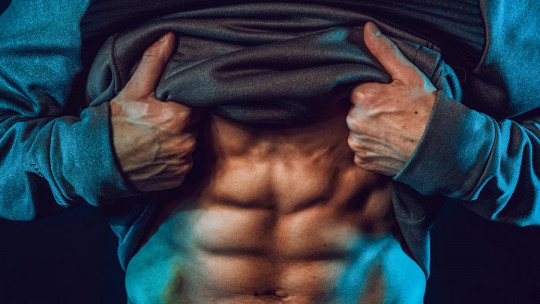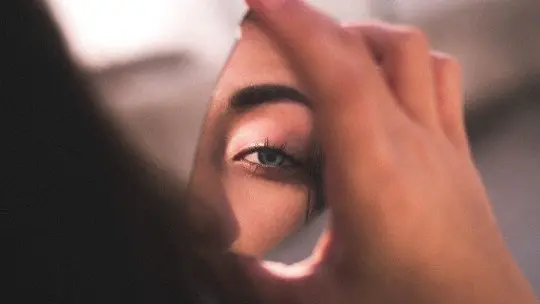
Vigorexia or muscle dysmorphia is a mental disorder in which the patient worries about their physical appearance to pathological levels. This disease affects 4 out of every 10,000 people at any given place and time, especially men between 18 and 35 years of age. Furthermore, these figures only increase in the United States and the rest of the world, surely due to the greater awareness that exists today regarding physical well-being.
Muscle dysmorphia is a type of obsessive-compulsive disorder that is categorized, more specifically, within body dysmorphic disorders (BDD). Obsession, in this case, is channeled into the search for a perfect image, especially when it comes to muscle development. Although vigorexia is not recognized as a disease by the international medical community, the Diagnostic and Statistical Manual of Mental Disorders (DSM IV-TR) takes it into account as a psychopathological condition.
As with all body dysmorphic disorders (BDD), there is a clear discrepancy between the imagined self and the actual individual. Patients become obsessed and believe that they are thinner than they should and that they have inadequate muscle mass, when reality reflects the opposite. If you want to know more about vigorexia and its relationship with self-esteem, keep reading.
Criteria to diagnose vigorexia
Before exploring the correlation between vigorexia and patient self-esteem, It is necessary to consider what is necessary for this to be considered vigorousexico In the first instance. The aforementioned Diagnostic and Statistical Manual of Mental Disorders (DSM IV-TR), published by the American Psychiatric Association (APA), shows us the following symptoms:
For a patient to be considered vigorous, they must meet at least 2 of the last 4 points mentioned.. Sometimes muscle dysmorphia is confused with vanity, but nothing could be further from the truth: the patient is not happy with his body, he sees himself as small and thin and, therefore, he tries to solve his supposed shortcomings with physical training that can reach be dangerous. A vigorous person does not find pride in his body nor does he try to attract attention with it, because in reality, he feels self-conscious about what he believes he is.
Vigorexia and self-esteem
Self-esteem is a set of perceptions directed towards oneself, but clearly, the environment plays an essential role in how we perceive ourselves on a social level.. In its hierarchy of human needs, self-esteem is defined on 2 clear fronts: the need for appreciation, which one has for oneself, and the respect and acceptance that one receives from other people.
To estimate the possible correlation between vigorexia and muscle dysmorphia, we must turn to science. We start with the investigation Muscle Dysmorphia and Eating Disorders: Comparison on Self-Esteem and Personality Traits, published on the ClinMed clinical portal. In this research, 2 sample groups were taken: men with vigorexia (MD) and women with eating disorders (ED), which were controlled with a control group (non-pathological).
Researchers and psychologists monitored interviews with each of the patients, which quantified parameters in each of them such as common concerns, self-esteem parameters, body self-perception and other things. It was shown that the pathological groups (ED and MD) presented a worse self-perception of the body, a higher degree of perfectionism and more common narcissistic behaviors. Anyway, only women with eating disorders (ED) showed lower self-esteem than the control group. Vigorexic men did not.
The following investigation, Relationship between self-esteem and symptoms of muscle dysmorphia in male bodybuilders (Mexican Journal of Eating Disorders) explores the same concept, with a different approach. In it, we tried to identify the symptoms of muscle dysmorphia in 4 groups of men (competitors, non-competitors, gym users and sedentary people) and evaluate their relationship with a possible decreased self-esteem. The sample was made up of 295 men, from 15 to 63 years of age.
The results were the following: Participants with lower self-esteem were those who scored higher in motivation for muscularity, compared to those with moderate and low motivation.. The correlation was significant and negative between both variables, that is, the lower self-esteem, the more desire to develop muscle mass.
In any case, it is still not clear whether this is a cause or a consequence of vigorexia. Does muscle dysmorphia cause low self-esteem, or is it the dysmorphia that causes low self-esteem?
In conclusion
As you can see, to understand body dysmorphic disorders (BDD) there is still a long way to go. Various studies argue that there is a clear correlation between vigorexia and lack of self-esteem, while other sample groups demonstrate the opposite. In any case, it is much more common for decreased self-esteem to occur in women with other disorders of this nature, such as anorexia nervosa and bulimia, than in men.
We are inclined to think that there is surely a clear correlation between both events, since not looking the way you want always reduces self-perception and, therefore, self-esteem. Anyway, What is very difficult is to quantify whether decreased self-esteem is a cause or consequence of disorders such as vigorexia.. More research is required to elucidate these issues.
Are you looking for help?
If you need psychotherapeutic or psychiatric support to overcome an emotional disturbance that is affecting you, contact us. In CITA Clinics You will find a team of mental health professionals with many years of experience treating patients in person and online.








